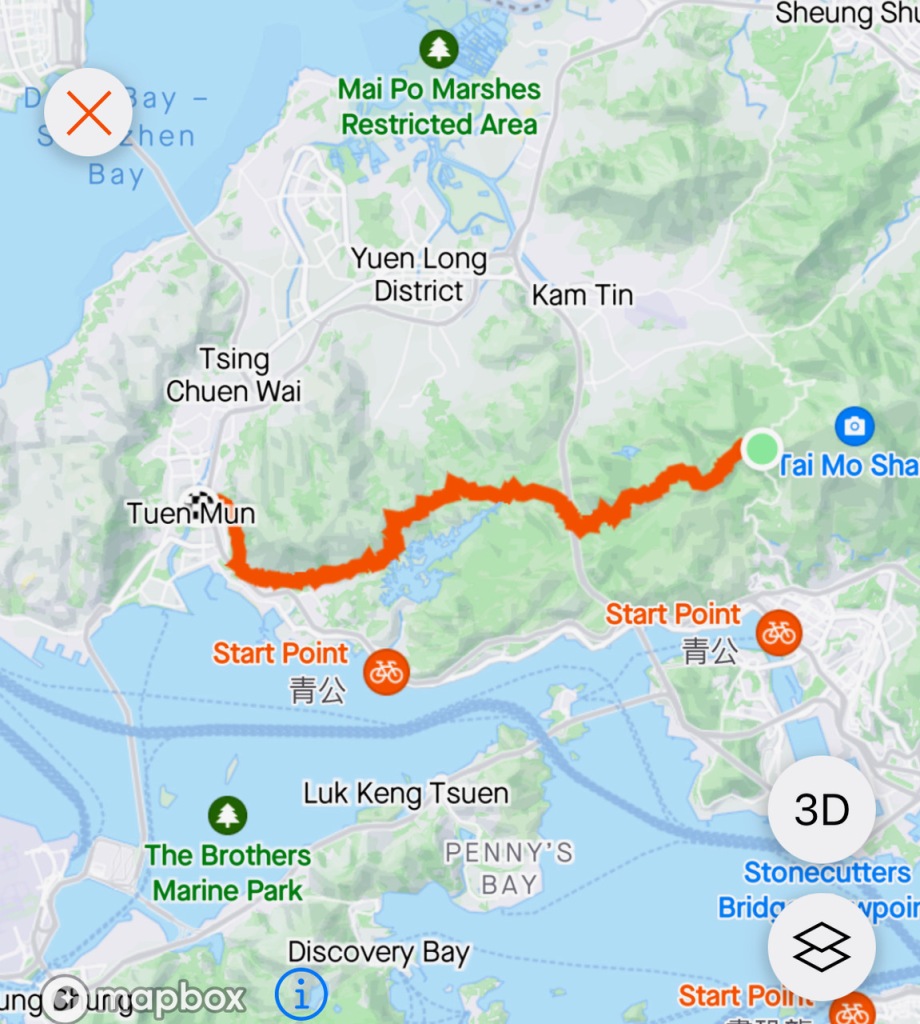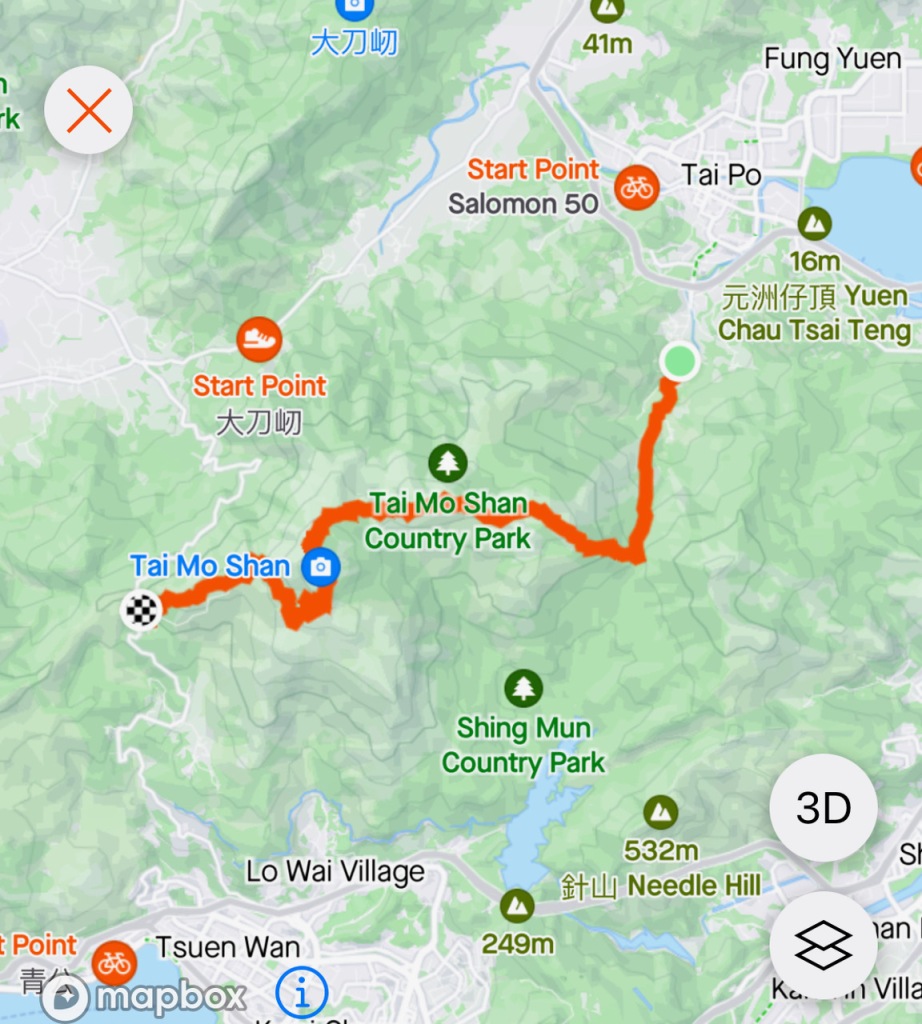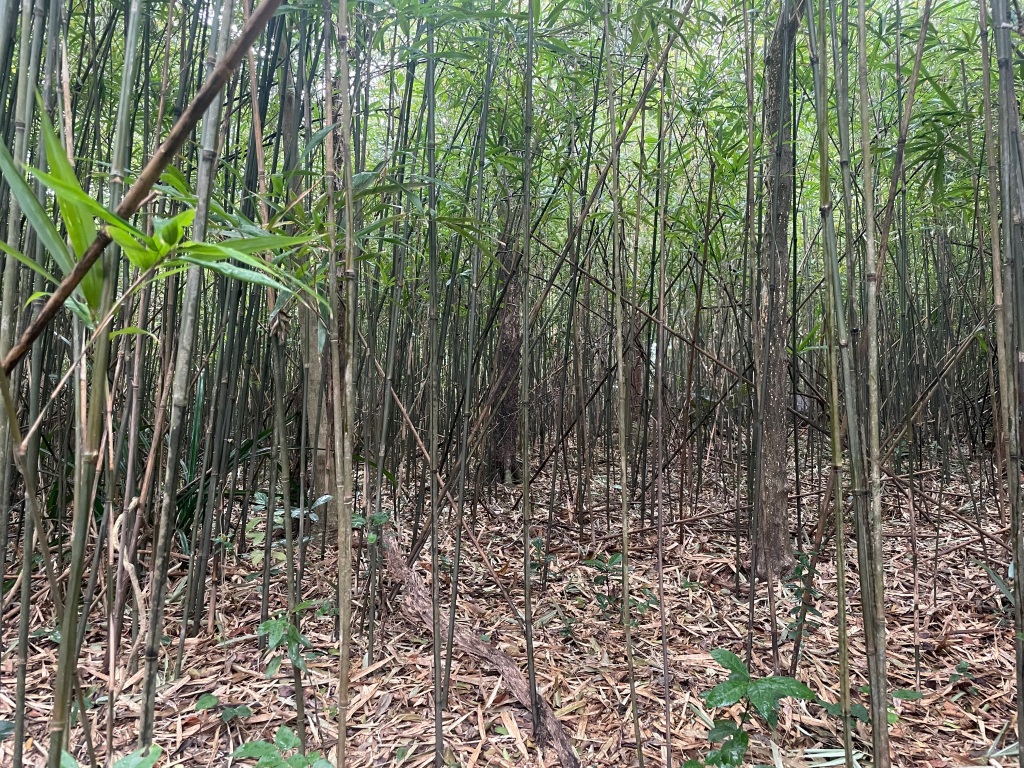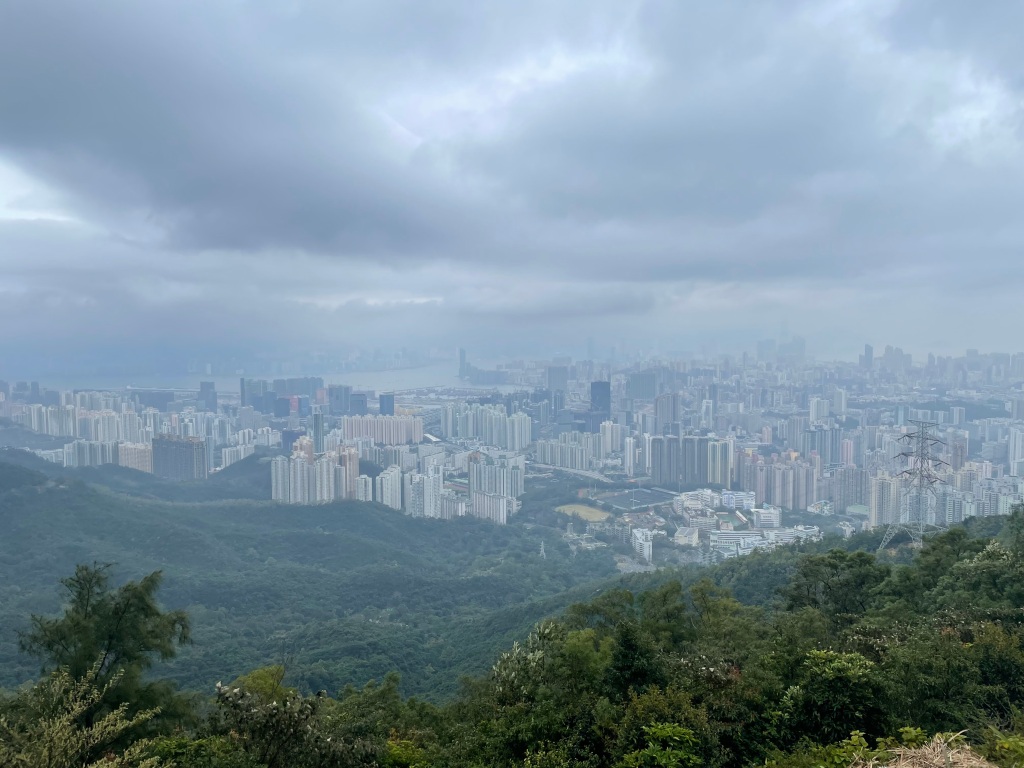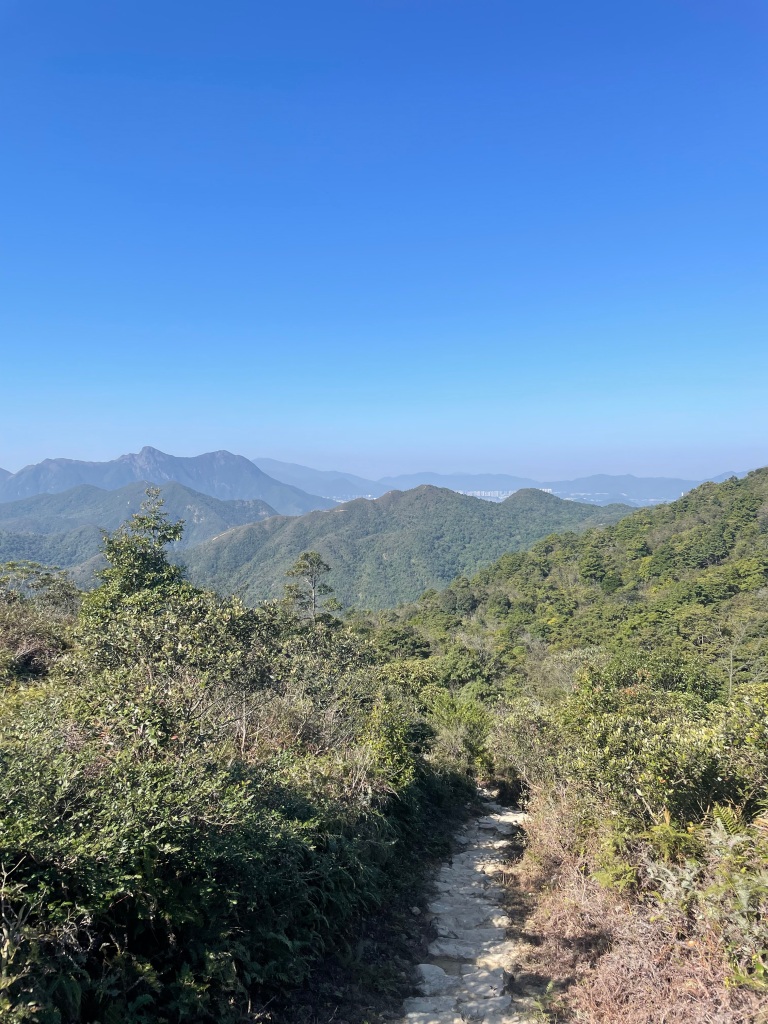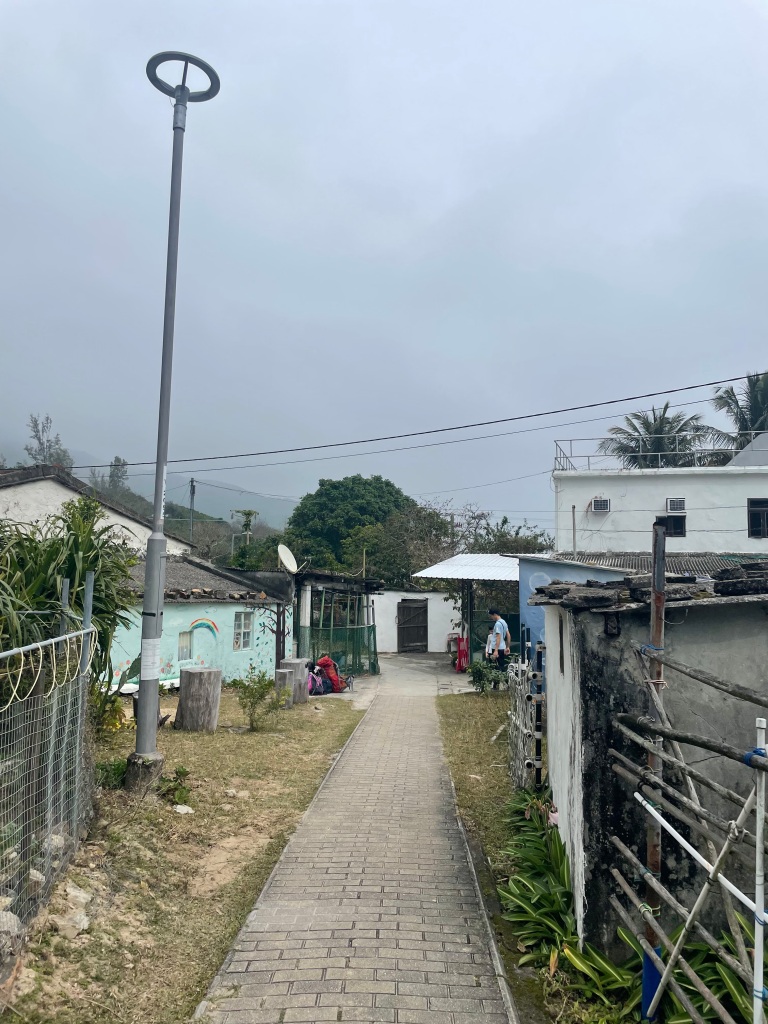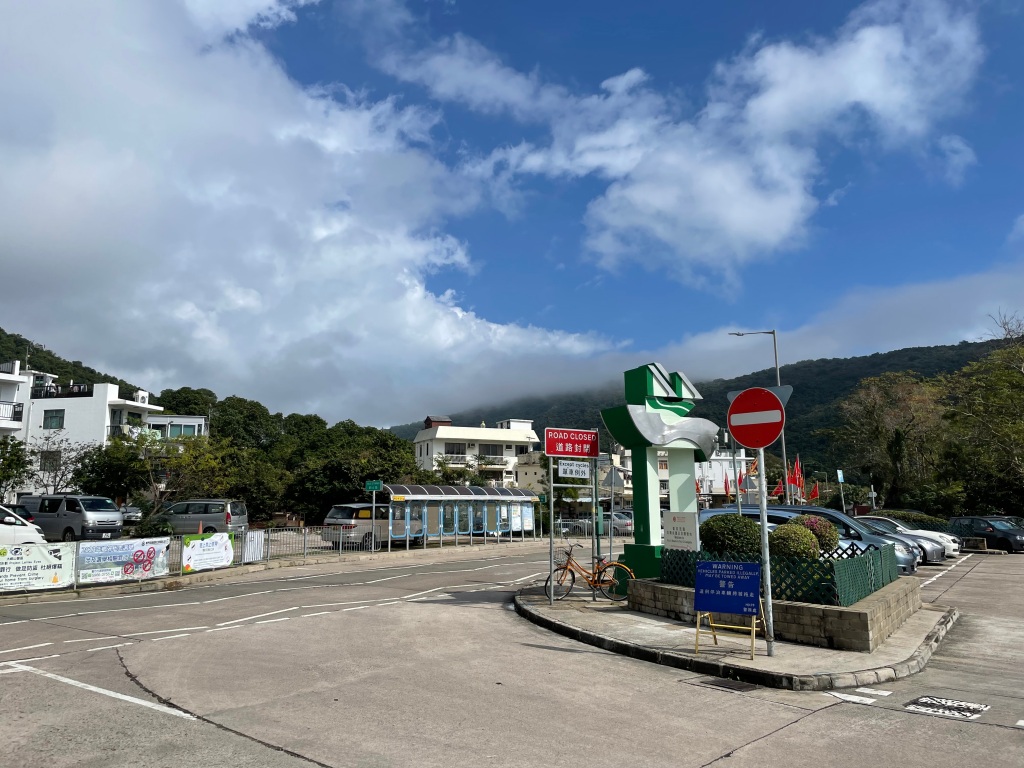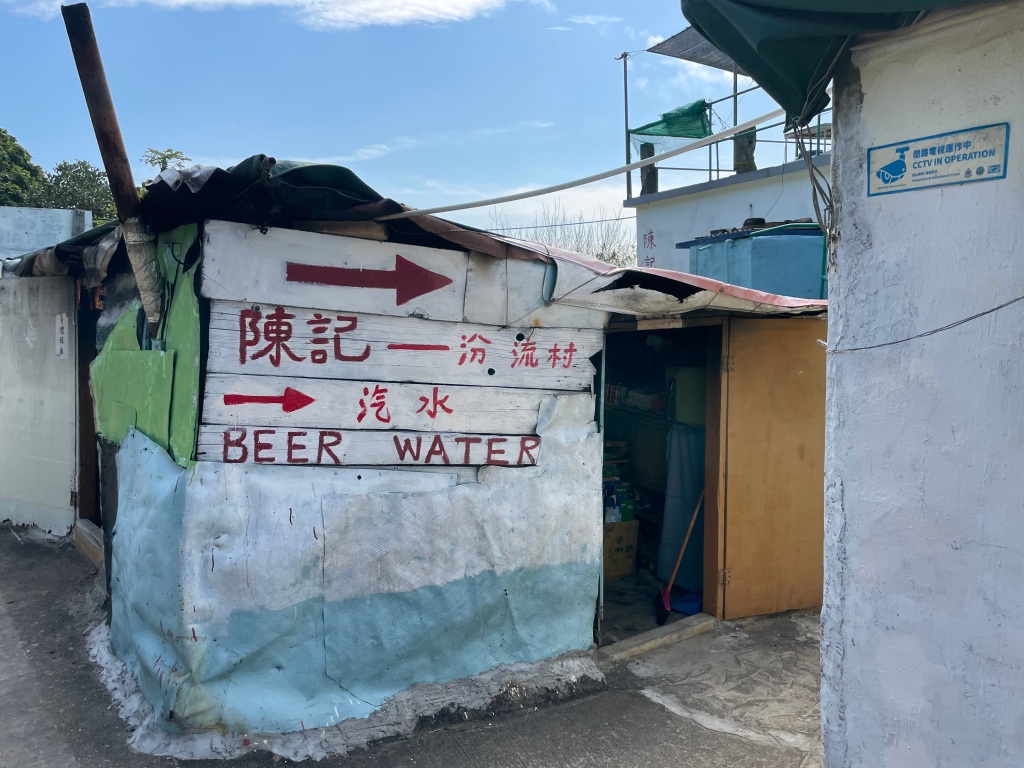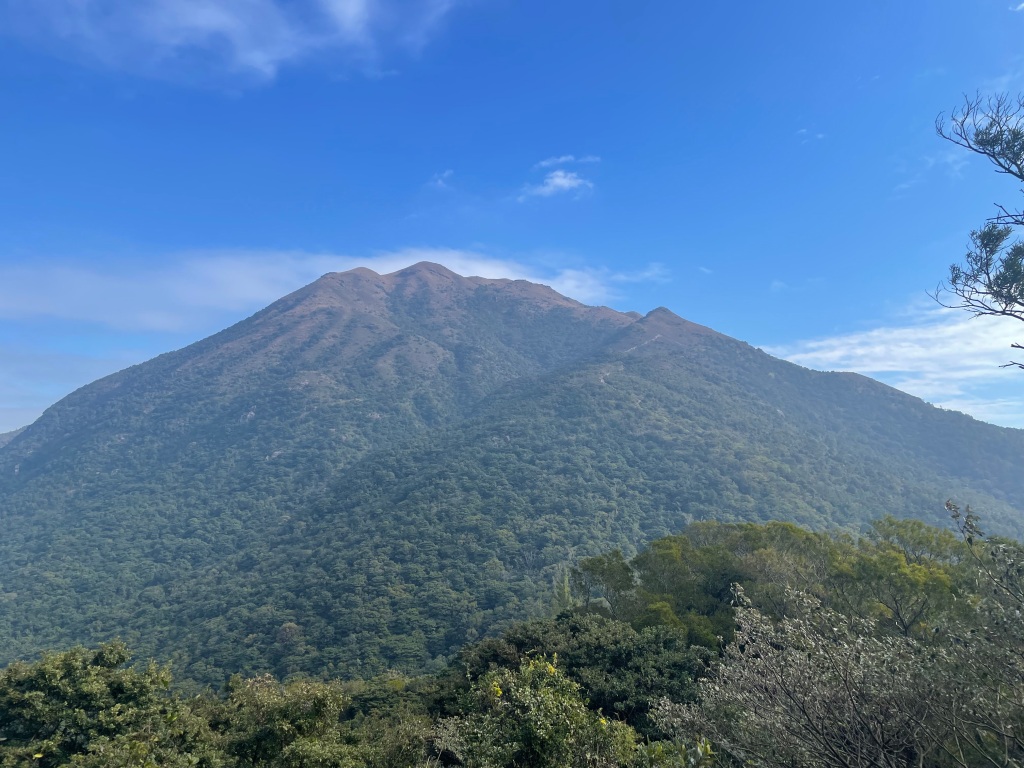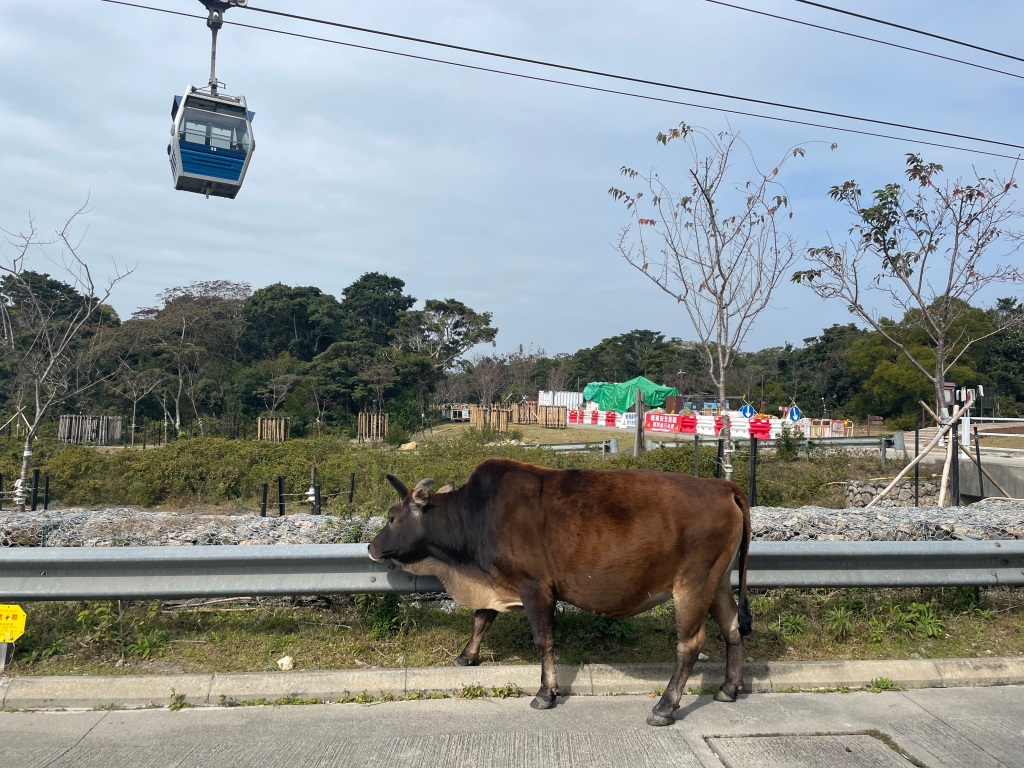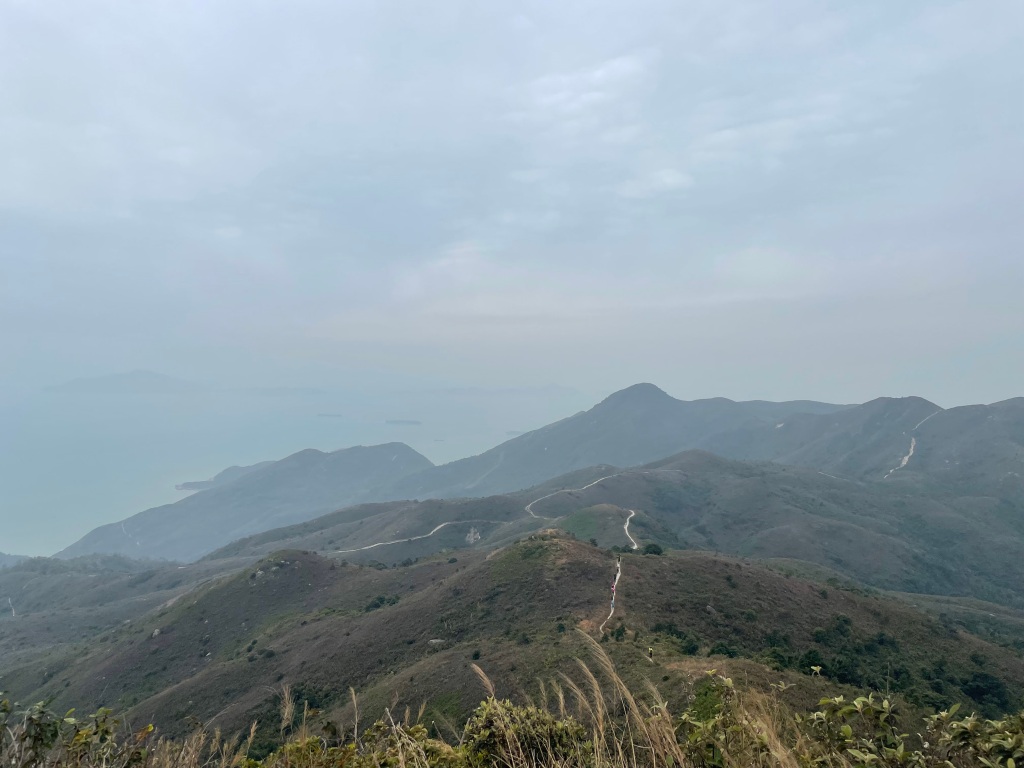MacLehose Trail – Stages 9 & 10 – Route Twisk-Tuen Mun
Route Twisk to Tuen Mun (Stage (9 & 10)
Saturday 4th March – 4h 31mins – 24.78km
The final stage, and off up a paved road through thick forest, continuing away from Route Twisk and Tai Mo Shan. To be honest, Stage 9 of the Maclehose Trail is fairly dull, though very sedate, and only every so often are you afforded a view either out across the docks at Tsuen Wan, or out to Yuen Long. The day was hazy, though, so even the scenery was a little disappointing. The trees, though, were a patchwork of greens, yellows and light oranges. Hardly Maine in fall, but unusual for Hong Kong.


These roads are also used for mountain biking, and so every so often one would whizz past on the downhill, or plod towards me as the driver struggled with a slope. There were cows too, or at least signs that they were around: the ubiquitous dried pats, and more unusually hooves from long ago imprinted in a stretch of concrete path.


As the trail transitioned into Stage 10, things became a little more interesting. The path had been winding down towards Tai Lam Chung Reservoir, and it finally turned into a proper trail just after I had passed the Sweet Gum Woods (that are rammed with photographers when the leaves turn in autumn). The steps take you up to a viewing point looking out over the reservoir, that appears to be dotted with hundreds of tiny islands (though most are peninsulas), and past temples dotted on the hillside for travellers going between Tuen Mun and Yuen Long to pray for safe passage, in the days before roads and tunnels.


Soon, though, it was back to paved roads, and a long stretch along a catchwater towards Tuen Mun. I ended up pondering just how many catchwaters I’d walked along on these four trails, and which catchwater is the most picturesque (I think I’d have to say the one on Stage 5 of the Wilson trail, with views of Lion Rock and Amah Rock). In truth, the end of the trail is as much of a dull trudge as the beginning, with the hazy views now out over Gold Coast and the sea beyond melting into the mist.


Then came Tuen Mun, which is a place I’ve never spent much time in, but which feels a bit like Hong Kong’s wild west: dry and dusty, and a little bit run down. The views down the low hillside were of construction sites and shacks, with Castle Peak an imposing presence on the other side of the river. I briefly wondered why the trail doesn’t end with that peak, one of Hong Kong’s most famous, but by this point my feet and calves were weary and I was glad that we were almost done.

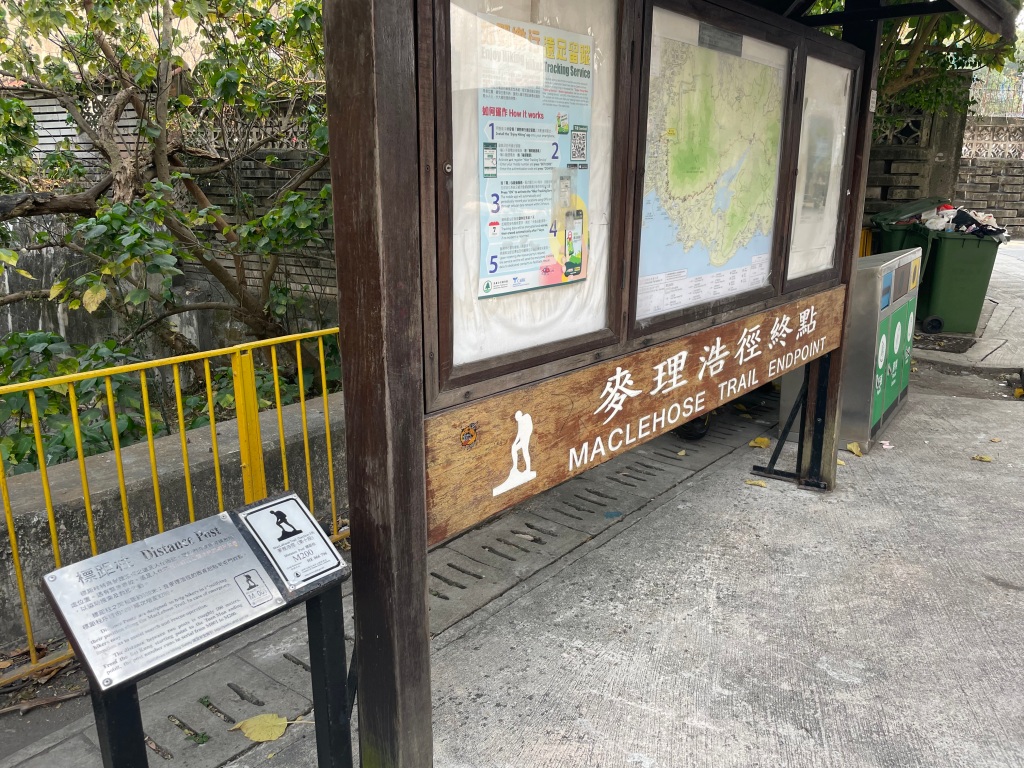
There was one final cruel climb, before a flight of zig-zagging steps took me down to the city centre, and an inconspicuous end to Hong Kong’s longest trail: a sign and marker next to a bin. My hike ended a few hundred metres further on in the most Hong Kong way possible, over and under various flyovers, at the MTR station.
